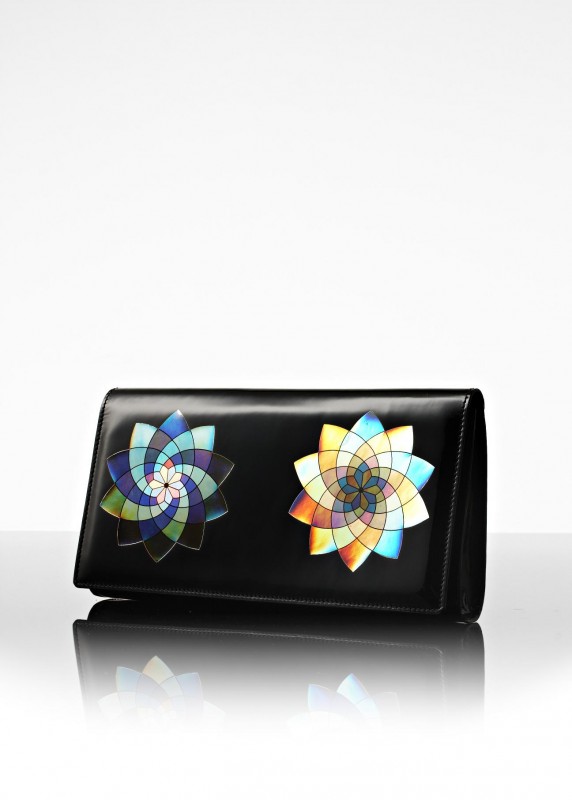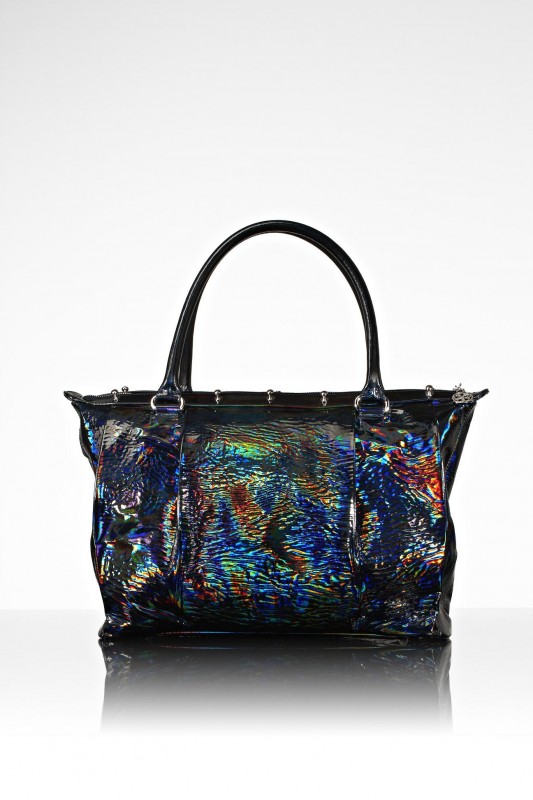Kzeniya: Confessions of a designer
Kzeniya Oudenot only graduated from St Martins College in 2006 but she is already making waves in a fashion industry that has been crying out for something different. Kzeniya talks to us about how her holographic 3D printed handbags are going to do just that…

FAULT: How would you describe the Kzeniya brand, and the thought process behind it? Looking at your degree (graduated from St Martin’s College of Art & Design) and your employment history (previously worked for Alexander McQueen), fashion is clearly something that you’re passionate about, but what is the story of how you came to develop the Kzeniya label?
Kzeniya: I was interested in fashion since I was really small. I was fascinated by the ‘theatrical fashion’, dresses that look like costumes. Clothes and accessories that enhance your look, your perception, make you distinctive; make your interaction with the world appear like a performance on the stage. As a result I decided to study performance design at St Martins as opposed to fashion training. After graduation I designed set and costumes for many theatre productions, I was then designing and organising events with fashion installations and shows. I spent a year researching new materials, technological innovations that could be used on clothes and accessories to break the link between a product as static ‘thing’ with a limited function and intractability and an ever changing, versatile surrounding and person wearing it.
I started developing 3D holograms on leather that change depending on the angle and light. I decided that a leather accessory is a perfect medium for my new prints. My first collection was for Spring Summer 2011. I am now developing holographic prints further. Meanwhile I totally fell in love with accessories; it’s fascinating to see how people wear leather bags with bold metal hard-wear almost fetishist and so sculptural. It’s amazing to realise how a bag can alter someone’s look, enhance a figure. A woman can wear a simple black dress and statement bag and instantly satisfy both practicality and a strive for a unique style.
FAULT: Your website says that your products are ‘ethically-sourced’ – could you go into some more detail?
Kzeniya: When I started my company I visited many factories and saw some with frankly appalling working conditions, unhygienic, unsafe with bad treatment of its staff. Today in the age when many business transactions are made by e-mail and internet sometimes you don’t know who you actually dealing with. I realised how important it is to make sure that my products are made with dignity, that suppliers that I work with respect the environment, that decent labour standards are met during the manufacturing of my products. I can now proudly say that my products are made in a small family run factory, in a beautiful Spanish town by the sea. I outsource materials from Italian tanneries who also respect the same values.

FAULT: What were the major influences for your current range of accessories?
Kzeniya: My current A/W 11-12 collection features futuristic, geometric shapes, lots of studs and distinctive hard-wear. The shape is designed to seduce the eye to draw attention to the body, metal, and strong handles suggest something fearless. When designing I don’t really draw I make shapes and try them on, for me it’s about the feeling, once you take these bags you feel brave, mysterious, confident, and very attractive. They make you stand straight, because everyone is looking at you; they are designed to draw attention.

FAULT: It is not overstating the case to say that some of your pieces are a triumph of the synergy between art and design. The bespoke 3D holographic prints give each piece the quality of artwork while the relative simplicity of your overall designs means that they are also eminently functional – not to mention timelessly stylish. But do you think that we are increasingly losing the practicality of design to the aestheticism of art?
Kzeniya: Sometimes it seams so but when you start thinking about the history of fashion, when women used to wear tight corsets with the hair in the shape of ships and men used to wear lots of gear, with stockings and wigs you realise that actually our generation is very practical.
For me art is an expression of idea, vision. Design on the other hand should serve a certain purpose – decorate a human body, so should be practical. But I believe that great design is a combination of practicality and aestheticism. Sometimes designers compromise on practicality for the sake of new creative expressions. It is good to have a variety and to be able to pick what is best for you.
…
(Read the full interview in the upcoming FAULT Issue 7, available to pre-order here from June)